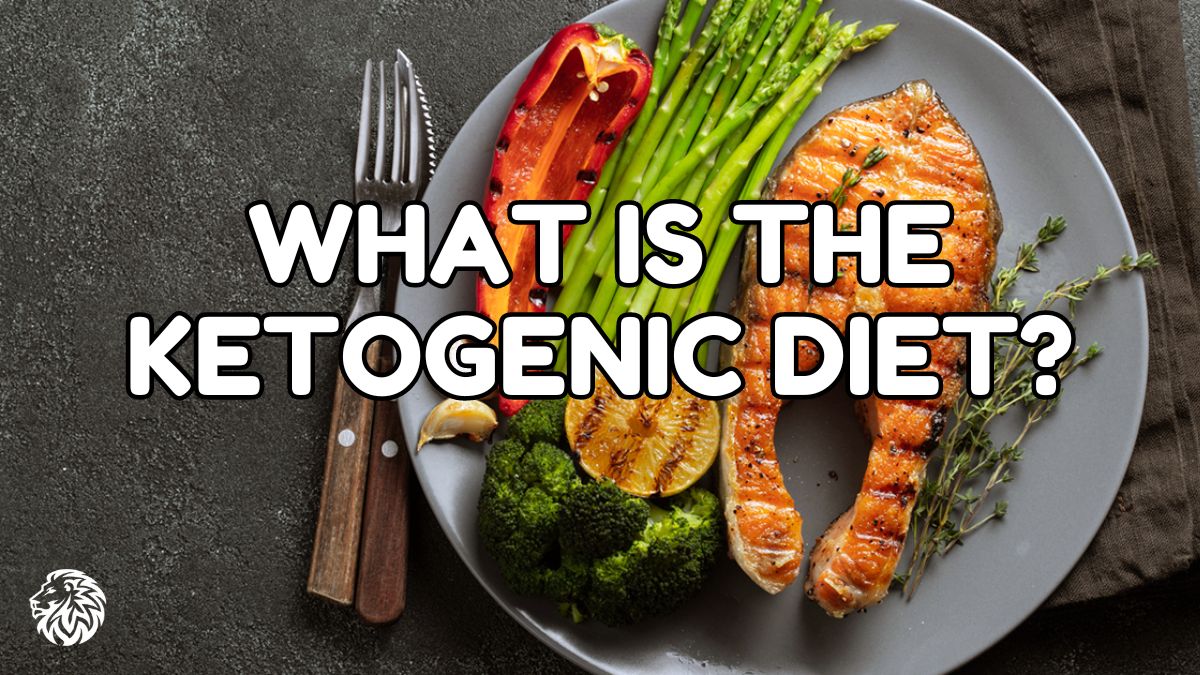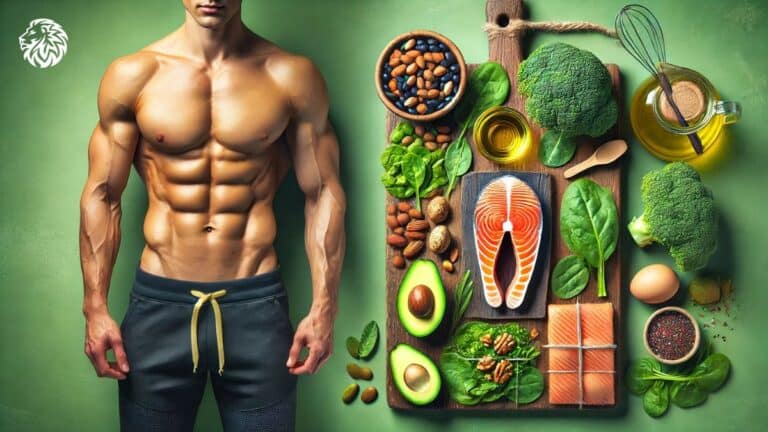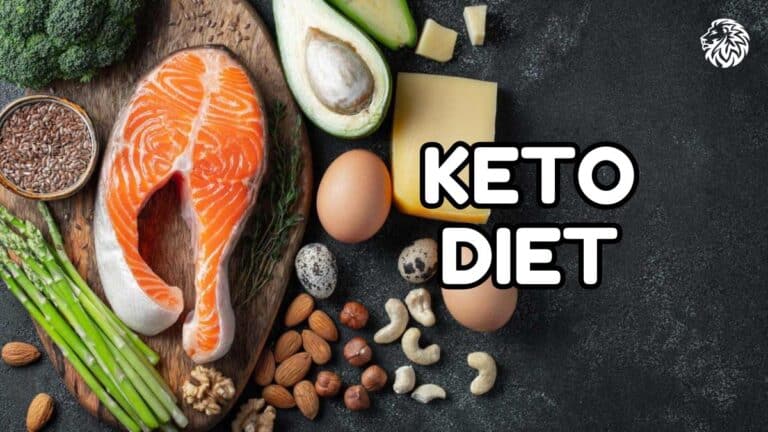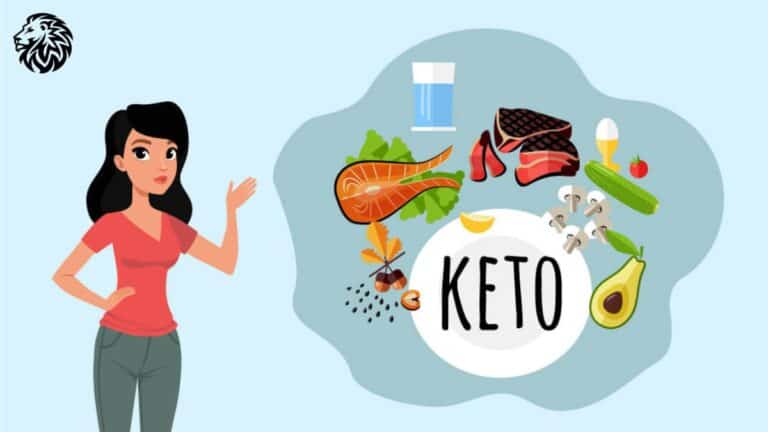The ketogenic diet, commonly referred to as keto, has gained significant attention for its ability to promote weight loss, improve energy levels, and offer numerous health benefits. But what exactly is this diet, and how does it work? In this guide, we’ll explore the basics of the ketogenic diet, how it compares to other diets, its benefits, and what foods to eat and avoid to succeed on your keto journey.
The Basics of the Ketogenic Diet
The ketogenic diet is a way of eating that drastically reduces carbohydrate intake while increasing fats. This shift in macronutrient balance encourages the body to enter a metabolic state called ketosis, where it burns fat for energy instead of glucose (sugar). When carbohydrates are restricted, the body produces ketones from fat, which act as an alternative fuel source. These ketones provide a more efficient and cleaner energy supply than glucose.
For many people, the idea of reducing carbs may seem daunting, but it’s worth understanding that the human body can run efficiently, and often better, on ketones. In fact, the body has significantly more stored fat (around 90,000 to 100,000 calories) than it has stored glycogen (only about 1,700 calories), making fat a more sustainable fuel source. As a result, once your body adapts to ketosis, you may find that you have more energy and fewer cravings for carbs.
Why the Ketogenic Diet is Different
One of the biggest reasons diets fail is due to hunger and cravings. Many traditional diets, including low-calorie and low-fat options, rely heavily on carbohydrates to provide energy. This not only limits fat burning but also keeps hunger levels high. In contrast, the ketogenic diet reduces hunger and eliminates carb cravings, making it easier to maintain over the long term.
In low-calorie and low-fat diets, you may lose some weight initially, but much of it is water weight rather than fat. The reliance on carbs also keeps you feeling hungry, making it hard to resist temptations and stick to the plan. This is why around 98% of people give up on these diets—they’re just not sustainable when you’re always battling hunger and cravings.
With keto, the opposite happens. Since fat is your primary energy source, your hunger subsides, and cravings are significantly reduced. This makes it easier to avoid overeating and snacking, allowing you to stay on track without feeling deprived.
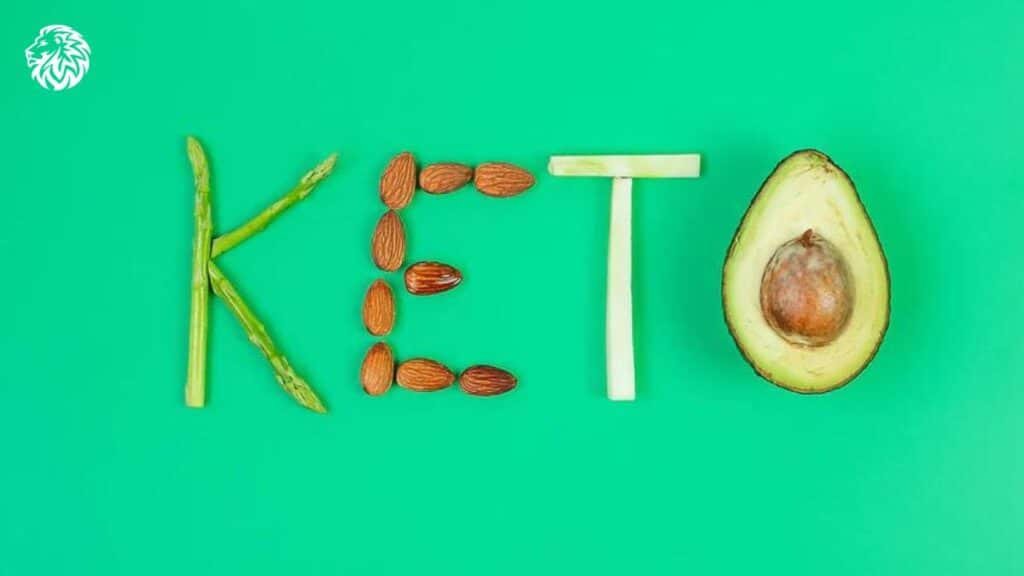
How to Achieve Ketosis
To enter ketosis, it’s essential to reduce your daily carbohydrate intake to between 20 and 50 grams. This forces the body to rely on fat stores for energy, producing ketones as a result. The fewer carbs you consume, the deeper into ketosis you go. However, unlike some misconceptions, the ketogenic diet is not a high-protein diet. It’s a moderate-protein diet, with about 20% of your daily calories coming from protein. Consuming too much protein can actually kick you out of ketosis because the body can convert excess protein into glucose.
The Health Benefits of Keto
The ketogenic diet offers a variety of health benefits that extend beyond weight loss, making it a popular choice for those looking to improve overall well-being. Here’s a detailed look at some of the key benefits:
1. Sustained Energy Levels
When your body runs on ketones, it becomes more efficient at burning fat for fuel. This results in steady energy levels throughout the day, with fewer spikes and crashes associated with blood sugar fluctuations. Since fat provides a more consistent energy supply, many people report feeling more energized and less reliant on frequent meals or snacks.
2. Reduced Hunger and Cravings
One of the most notable benefits of the ketogenic diet is the significant reduction in hunger and cravings. Because fat and protein are more satiating than carbohydrates, you’ll feel full longer, making it easier to resist unnecessary snacking or overeating. This is especially helpful for people who struggle with overeating or emotional eating, as the diet naturally reduces the desire for high-carb, sugary foods.
3. Improved Cognitive Function
The brain thrives on ketones, which serve as a cleaner and more efficient fuel than glucose. People on the ketogenic diet often experience sharper mental clarity, better focus, and improved memory. Many report that they feel less foggy and more alert, with enhanced cognitive performance in tasks requiring concentration and problem-solving. This cognitive boost is particularly valuable for individuals dealing with mental fatigue or brain fog.
4. Decreased Inflammation
Chronic inflammation is linked to a wide range of health issues, including arthritis, cardiovascular disease, and certain autoimmune conditions. The ketogenic diet has anti-inflammatory effects, which can help reduce joint pain, stiffness, and other inflammatory symptoms. By lowering carbohydrate intake, the body produces fewer inflammatory markers, which can lead to noticeable improvements in overall health, including clearer skin and reduced acne.
5. Better Blood Sugar and Insulin Control
For individuals with insulin resistance, type 2 diabetes, or pre-diabetes, the ketogenic diet can be a powerful tool. By drastically reducing carbohydrate intake, blood sugar levels remain stable, and the body produces less insulin. This helps lower insulin resistance, a condition where the body’s cells don’t respond properly to insulin, leading to higher blood sugar levels and a greater risk of metabolic disorders. Reducing insulin resistance can prevent or reverse pre-diabetes and may lower the risk of developing full-blown type 2 diabetes.
6. Weight Loss Through Fat Burning
The ketogenic diet promotes fat loss by switching the body’s primary fuel source from carbohydrates to fat. Once the body is in ketosis, it becomes highly efficient at burning fat, leading to gradual and sustainable weight loss. Unlike other diets where muscle loss may accompany fat loss, keto primarily targets fat, helping maintain muscle mass while shedding excess body fat.
7. Enhanced Physical Performance
Some individuals notice an improvement in physical endurance and recovery times after adopting a ketogenic diet. With a consistent fuel source in the form of fat, your body can sustain energy levels during prolonged exercise without the need for frequent carb-based refueling. This can be especially beneficial for athletes or those engaging in endurance activities such as running, cycling, or hiking.
8. Reduced Risk of Chronic Diseases
By lowering insulin levels and reducing inflammation, the ketogenic diet may reduce the risk of several chronic diseases, including heart disease, metabolic syndrome, and certain cancers. High levels of insulin are associated with conditions like high blood pressure, high cholesterol, and belly fat, all of which increase the risk of heart disease. Furthermore, cancer cells thrive on glucose, so by limiting sugar intake, keto may help slow the growth of some cancers.
These health benefits make the ketogenic diet an attractive option for improving overall health, supporting long-term weight management, and reducing the risk of chronic illnesses. However, it’s essential to follow a balanced and nutritious version of keto by focusing on whole, unprocessed foods to maximize these benefits.
Healthy Ketosis vs. Regular Ketosis
Not all keto diets are created equal. It’s crucial to distinguish between regular ketosis and healthy ketosis. In a healthy version of the ketogenic diet, you focus on consuming nutrient-dense, whole foods rather than processed, low-carb options. Eating a variety of vegetables, high-quality fats, and moderate protein ensures you’re getting essential vitamins, minerals, and antioxidants while staying in ketosis.
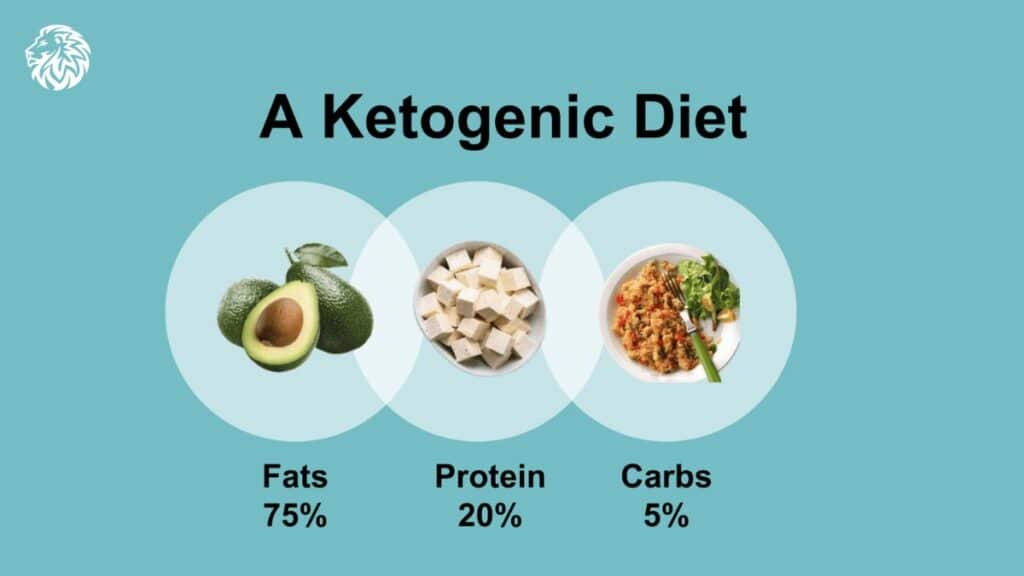
The Macronutrient Breakdown
To maintain ketosis and achieve optimal health, it’s important to get the right balance of macronutrients. Here’s a basic breakdown:
- Carbohydrates: 5% of your total calories should come from carbohydrates. However, this doesn’t include vegetables, as non-starchy vegetables should be eaten freely. You should aim for 7 to 10 cups of vegetables per day for fiber, vitamins, and minerals. Leafy greens and cruciferous vegetables (like broccoli and cauliflower) are ideal choices.
- Protein: 20% of your total calories should come from protein. This typically amounts to around 3 to 6 ounces of protein per meal, depending on your size and activity level. Choose quality protein sources like grass-fed beef, wild-caught fish, free-range poultry, and eggs.
- Fats: 70% of your total calories should come from fats. This may sound like a lot, but keep in mind that fat has more calories per gram than carbohydrates or protein. Healthy fat sources include olive oil, coconut oil, avocados, nuts, seeds, and butter from grass-fed cows.
When building your meals, think of your plate in terms of balance: half should be filled with non-starchy vegetables, one-quarter with protein, and the remaining quarter with healthy fats.
Foods to Eat and Avoid on the Ketogenic Diet
The ketogenic diet requires careful planning to ensure you’re eating the right balance of nutrients while staying within your daily carbohydrate limits. The key to success is focusing on low-carb, high-fat foods and avoiding those that can spike your blood sugar or kick you out of ketosis. Here’s a detailed look at what you should include and avoid in your keto meal plan.
Foods to Eat
To maintain ketosis, your meals should primarily consist of nutrient-dense, low-carb foods, moderate protein, and high-quality fats. Here are some of the best options:
1. Vegetables (Non-Starchy)
Non-starchy vegetables are low in carbs and packed with fiber, vitamins, and minerals. They should make up a large portion of your diet, especially leafy greens and cruciferous vegetables. These vegetables are also rich in antioxidants and have anti-inflammatory properties.
- Leafy Greens: Spinach, kale, arugula, Swiss chard, and romaine lettuce.
- Cruciferous Vegetables: Broccoli, cauliflower, Brussels sprouts, and cabbage.
- Other Low-Carb Veggies: Zucchini, bell peppers, asparagus, cucumber, and celery.
You can consume these vegetables raw in salads or cooked (preferably steamed or roasted) as part of a meal. Aim for 7 to 10 cups of non-starchy vegetables daily to meet your fiber and nutrient needs.
2. Protein (Moderate Amounts)
Protein should be consumed in moderate amounts on keto, as too much protein can be converted into glucose, which may interfere with ketosis. Opt for high-quality, unprocessed protein sources.
- Meat: Grass-fed beef, pork, lamb, and free-range poultry.
- Fish and Seafood: Wild-caught salmon, mackerel, sardines, shrimp, and other seafood.
- Eggs: Organic, pasture-raised eggs.
- Cheese: Full-fat cheeses like cheddar, mozzarella, and goat cheese (in moderation).
It’s important to note that protein sources like meat, fish, and eggs also contain healthy fats, making them ideal for keto. Stick to 3 to 6 ounces of protein per meal, adjusting based on your body size and activity level.
3. Healthy Fats
Fats are the cornerstone of the ketogenic diet, making up the majority of your daily calorie intake. Choose healthy, unprocessed fats that support overall health and provide long-lasting energy.
- Oils: Extra virgin olive oil, coconut oil, avocado oil, and MCT oil (medium-chain triglycerides).
- Fats from Animal Sources: Butter, ghee, lard, and tallow (preferably from grass-fed animals).
- Avocados: Both whole avocados and avocado oil are excellent fat sources.
- Nuts and Seeds: Almonds, macadamia nuts, chia seeds, flaxseeds, and pumpkin seeds (in moderation).
Be mindful of portion sizes with nuts and seeds, as they contain both fats and small amounts of carbohydrates.
4. Low-Carb Fruits
Fruits are generally limited on the ketogenic diet due to their higher carb content, but there are a few low-carb options that can be enjoyed in moderation.
- Berries: Strawberries, raspberries, blackberries, and blueberries (in small quantities).
Berries are high in fiber and low in sugar compared to other fruits, making them a suitable choice for keto when consumed in moderation.
5. Dairy (Full-Fat)
Full-fat dairy products are rich in fat and can be a good addition to your keto diet, but choose high-quality options and consume them in moderation.
- Butter: Preferably from grass-fed cows.
- Heavy Cream: Full-fat, unsweetened cream for coffee or recipes.
- Cream Cheese: A versatile ingredient in keto recipes, from desserts to sauces.
6. Beverages
Hydration is crucial on keto, especially since the diet can lead to fluid loss in the early stages. Drink plenty of water, and opt for keto-friendly beverages.
- Water: Plain or sparkling water is the best choice. Add lemon or lime slices for flavor.
- Coffee and Tea: Unsweetened and preferably organic. You can add heavy cream or a keto-friendly sweetener like stevia.
- Bone Broth: Rich in minerals and electrolytes, making it a good choice for replenishing sodium and other nutrients.
Foods to Avoid
To stay in ketosis, it’s important to avoid foods that are high in carbohydrates, sugars, and processed ingredients. These foods can spike insulin levels, increase blood sugar, and prevent fat burning.
1. Grains
Grains are high in carbohydrates and should be avoided on a ketogenic diet. This includes both whole grains and refined grains, as they will quickly break down into glucose and raise blood sugar levels.
- Bread and Pasta: All types of bread (including whole wheat), pasta, bagels, and tortillas.
- Rice and Quinoa: White rice, brown rice, quinoa, and other grain-based foods.
- Cereal and Oats: Breakfast cereals, granola, and oatmeal.
Even gluten-free options contain carbohydrates and should be avoided on keto.
2. Starchy Vegetables
Starchy vegetables are another major source of carbs and should be limited or avoided entirely. These vegetables can significantly impact blood sugar levels.
- Potatoes: White potatoes, sweet potatoes, and yams.
- Corn: Whether on the cob or canned, corn is high in carbs.
- Carrots and Beets: These root vegetables are starchy and should be consumed sparingly, if at all.
3. Sugar and Sweeteners
Sugar is one of the most obvious culprits to avoid on keto, as it directly raises blood glucose levels and interferes with ketosis. Many processed foods contain hidden sugars, so always check labels carefully.
- Sugars: Cane sugar, brown sugar, honey, agave syrup, and maple syrup.
- High-Fructose Corn Syrup: Found in many sodas, candies, and packaged goods.
- Juice: Even 100% fruit juice is high in sugar and should be avoided.
Instead, opt for natural, low-carb sweeteners like stevia, monk fruit, xylitol, and erythritol, which have little to no effect on blood sugar levels.
4. Processed and Packaged Foods
Most processed and packaged foods are filled with hidden carbs, unhealthy fats, and artificial ingredients that are best avoided on a ketogenic diet.
- Chips, Crackers, and Cookies: These snacks are high in both carbs and unhealthy fats.
- Packaged Meals: Frozen dinners, instant noodles, and other convenience foods often contain added sugars and preservatives.
- Fast Food: Most fast food options are carb-heavy, fried in unhealthy oils, and made with processed ingredients.
5. Sugary Beverages
Many beverages are loaded with sugars that can quickly kick you out of ketosis, so they should be avoided.
- Soda: Regular and diet sodas often contain hidden sugars or artificial sweeteners.
- Sweetened Coffee Drinks: Flavored lattes, frappuccinos, and other coffee drinks often have added sugar.
- Energy Drinks and Sports Drinks: Many contain sugar or high-fructose corn syrup.
Look for keto-friendly options like unsweetened iced tea, black coffee, or water flavored with lemon or mint.
6. Processed Fats and Oils
Not all fats are created equal. Avoid unhealthy, processed fats and oils that can promote inflammation and negatively impact health.
- Vegetable Oils: Soybean oil, corn oil, canola oil, and other processed vegetable oils.
- Margarine: Contains trans fats, which are harmful to heart health.
Opt for healthy, natural fats like olive oil, coconut oil, and butter from grass-fed cows instead.
Following a ketogenic diet involves focusing on high-quality, nutrient-dense foods that support ketosis while avoiding carb-heavy, processed, and sugary foods. By prioritizing low-carb vegetables, moderate protein, and healthy fats, you can enjoy the benefits of sustained energy, reduced cravings, and improved overall health. Avoiding grains, sugars, and processed foods is essential to staying in ketosis and reaping the rewards of this dietary lifestyle. Stick to whole, unprocessed foods, and your keto journey will be smoother and more successful.
Final Thoughts on the Ketogenic Diet
The ketogenic diet isn’t just a tool for weight loss; it’s a way to improve overall health by reducing inflammation, balancing blood sugar, and supporting cognitive function. By focusing on nutrient-dense, low-carb foods, you can enjoy long-term success on this diet without the constant hunger and cravings that come with other diet plans.
The key to success lies in understanding the balance of macronutrients, choosing high-quality ingredients, and avoiding processed foods. With the right approach, the ketogenic diet can be a sustainable and effective way to improve your health and well-being.
References
- Anton, S. D., Moehl, K., Donahoo, W. T., Marosi, K., Lee, S. A., Mainous, A. G., & Mattson, M. P. (2018). Flipping the metabolic switch: Understanding and applying the health benefits of fasting. Obesity, 26(2), 254-268. https://www.ncbi.nlm.nih.gov/pmc/articles/PMC6356942/
- Mancinelli, R., Simonelli, G., & Cosmelli, D. (2019). Effects of the ketogenic diet in the treatment of epilepsy: A review of the literature. Neuropsychiatric Disease and Treatment, 15, 3649-3661. https://pubmed.ncbi.nlm.nih.gov/30289048/
- Paoli, A., Rubini, A., Volek, J. S., & Grimaldi, K. A. (2013). Beyond weight loss: A review of the therapeutic uses of very-low-carbohydrate (ketogenic) diets. European Journal of Clinical Nutrition, 67(8), 789-796. https://www.ncbi.nlm.nih.gov/pmc/articles/PMC7056920/
- Puccioni-Sohler, M., Gomes, H. R., & Castro, M. J. (2016). Neurological diseases in Brazil: An epidemiological analysis based on mortality data. Arquivos de Neuro-Psiquiatria, 74(9), 715-720. https://www.scielo.br/j/anp
- Shah, M., & Ryan, D. H. (2020). Can ketogenic diet reduce obesity and prevent diabetes? Journal of Diabetes and Metabolism, 4(1), 22-34. https://www.ncbi.nlm.nih.gov/pmc/articles/PMC7269727/
- Feeney, G. F. X., McGregor, C., Dunlop, A. J., et al. (2018). Ketogenic diet as a potential therapy for alcohol use disorder. The Effects of Ketogenic Diet on Neurological Disorders. In StatPearls. https://www.ncbi.nlm.nih.gov/books/NBK499830/
- Gasior, M., Rogawski, M. A., & Hartman, A. L. (2006). Neuroprotective and disease-modifying effects of the ketogenic diet. Behavioural Pharmacology, 17(5-6), 431-439. https://www.ncbi.nlm.nih.gov/pmc/articles/PMC3945587/
- Harvard T.H. Chan School of Public Health. (n.d.). Ketogenic diet. The Nutrition Source. https://nutritionsource.hsph.harvard.edu
- Olson, C. A., Vuong, H. E., Yano, J. M., Liang, Q. Y., Nusbaum, D. J., & Hsiao, E. Y. (2018). The gut microbiota mediates the anti-seizure effects of the ketogenic diet. Cell, 173(7), 1728-1741. https://www.ncbi.nlm.nih.gov/pmc/articles/PMC6836058/
- Paoli, A., Mancin, L., Bianco, A., Thomas, E., Mota, J. F., & Piccini, F. (2019). Ketogenic diet and microbiota: Friends or enemies? Genes, 10(7), 534. https://www.ncbi.nlm.nih.gov/pmc/articles/PMC6720297/
- Kossoff, E. H., Dorward, J. L. (2018). The modified Atkins diet. Epilepsia, 49(S8), 37-41. https://www.ncbi.nlm.nih.gov/pmc/articles/PMC5842847/
